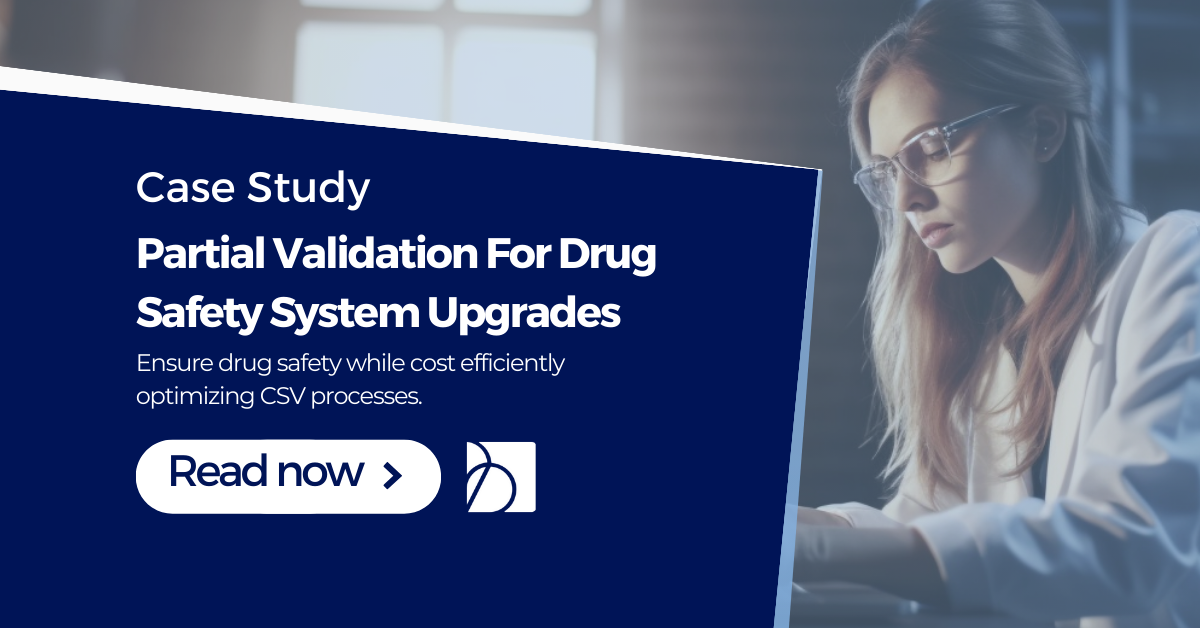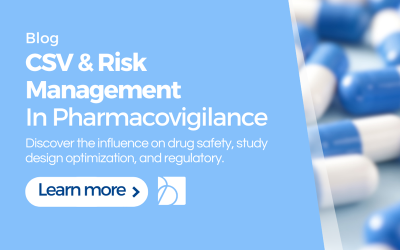In constantly evolving drug safety systems, introducing new functionalities and added features are pivotal moments that demand scrutiny. With each system upgrade, a whirlwind of queries is involved – should we validate? If yes, how extensively? And, importantly, how do we document this intricate flow of decisions?
Partial Validation For Drug Safety System Upgrades
Partial validation can be challenging. It’s determined not only by the system’s complexity or novelty but also by various factors such as risk assessment outcomes, system architecture, and the specific changes brought by the new functionality. Join us as we discuss our recent experience with partial validation.
Steps influencing your approach:
- System’s impact, complexity, and novelty
- Risk assessment results
- Supplier assessment result
- GAMP 5 category of the system
- System architecture
- Process step to be changed by new functionality
Our case study? We were tasked with validating a new feature for a major safety database from a mid-sized CRO in the EU. Starting from all necessary documents and the system categorized under GAMP 5 as category 4, we carefully prepared our plan, including:
- User Requirements Specification (URS) update
- Risk assessment of new functionality implementation
- Validation plan development
- Traceability matrix update
- Test scripts execution
- Validation report preparation
Diving Deeper into the Process
After getting feedback from stakeholders, our initial step was to update the existing User Requirements Specification to maintain efficiency.
During the Risk Assessment, we collaborated with the Subject Matter Expert (SME) from the client’s side. We determined that the new feature, which provides an additional method to generate adverse event reports in the safety database, would complement the current system. Using the Biomapas Risk Matrix, we worked with the SME to identify potential risks, concluding that a partial validation was appropriate.
Our goal was evident when we moved on to the validation plan and traceability matrix update. We needed a plan that clearly outlined what needed testing, backed by solid reasoning for each choice.
Testing Challenges and Outcomes
With test scripts provided by the vendor, our objective was straightforward: execute flawlessly and gather comprehensive evidence. However, we encountered a minor misconfiguration. We resolved the issue through prompt communication and adjustments, followed by a re-test, and got the system ready for production use.
Conclusion on Partial Validation
Partial validation can offer significant efficiencies, as evidenced by our 80-90% reduction in test scripts during this process. However, it’s crucial to approach it meticulously. Missteps can result in flawed strategies or a system that’s not compliant.
We’re here to assist if you’re contemplating using partial validation for your next project and aim to cut costs without sacrificing quality.












